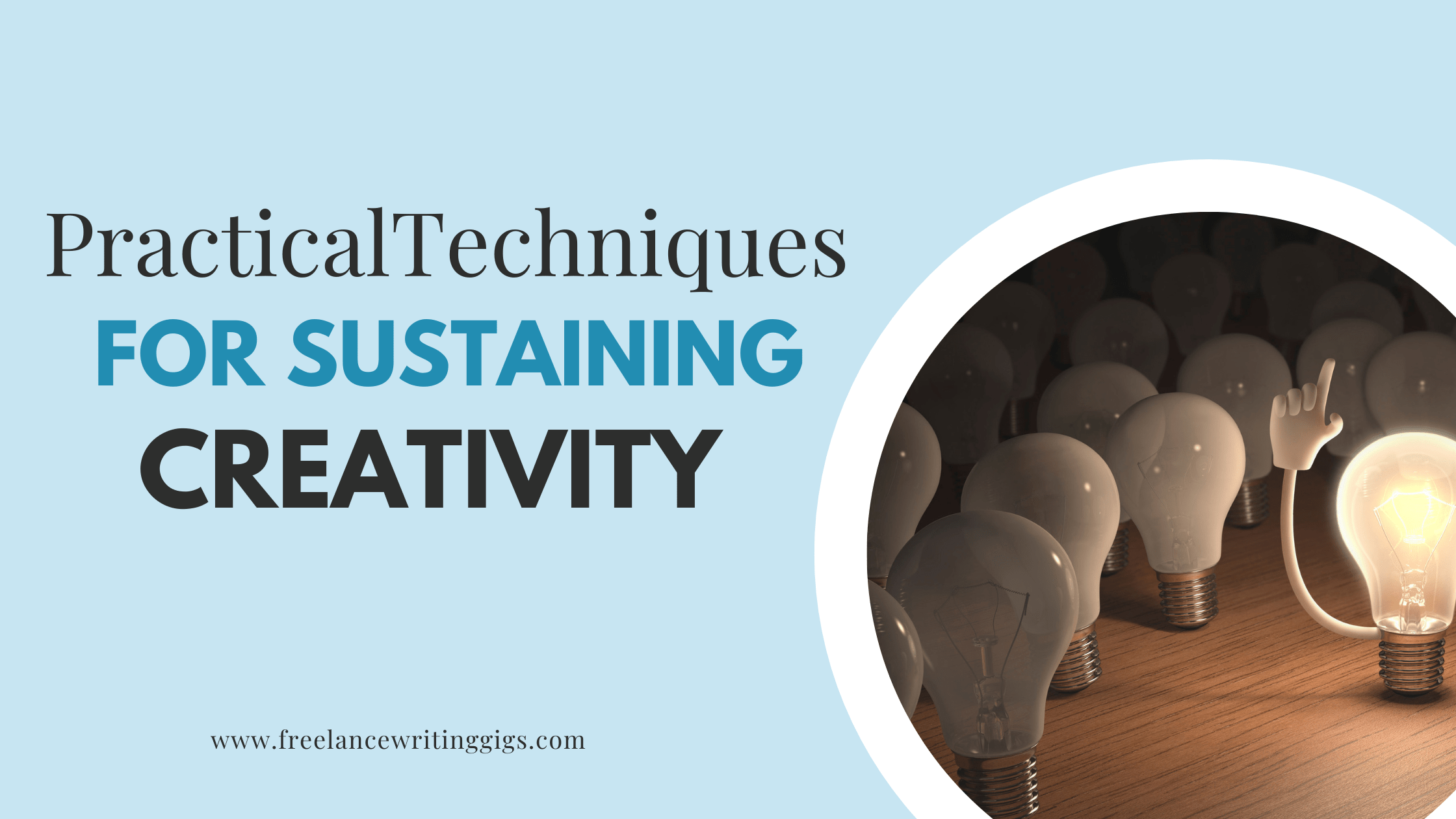Writers often find themselves oscillating between two extremes: burnout—a state of chronic mental fatigue, emotional depletion, and disillusionment—and inspiration, a sudden blaze of insight that propels new ideas into being. Burnout isn’t a romantic badge of honor; it’s a warning sign—the mental equivalent of a flashing “check engine” light. It tells you the well is running dry. Inspiration, by contrast, feels like a gust of fresh wind in a stagnant room, invigorating and urgent.
Balancing these opposing energies has always been a struggle for creatives. From Renaissance painters juggling demanding patrons to modern-day freelancers drowning in deadlines and push notifications, preserving creative spark in an overstimulated world requires more than talent—it demands tools, rituals, discipline, and most importantly, awareness.
In this article, we’ll explore not only how to identify burnout early but also how to use micro-challenges and daily practices to turn struggle into strength. These strategies draw from psychology, creative studies, and modern neuroscience, all while grounding themselves in time-honored creative traditions.
Turn Micro-Challenges Into Creative Fuel
Take the story of a visual designer who encountered a bug with GPS permissions on an app. What started as a frustrating interruption evolved into a case study, “On the Map, Off the Grid: Troubleshooting the ‘No Location Found’ Error on iPhones.” Rather than giving up, they reverse-engineered logs, tested device permissions, and ultimately built a framework for debugging that later inspired new features in their art software.
This process reflects a broader truth: Creative breakthroughs are often hidden inside problems. A glitch, a constraint, or a limit forces new neural paths to form. This echoes the creative philosophy of Brian Eno’s Oblique Strategies, a deck of cards he co-created to help musicians work through creative blocks. These strategies show how embracing limitations often yields surprising new results.
For a freelance writer, a client’s last-minute request for a complete change in tone or target audience could feel like a setback. Instead of seeing it as a problem, you could embrace this new constraint. The challenge of adapting a well-researched article for a completely different readership could lead to a fresh, more versatile writing process. This unexpected pivot might even result in a new service offering (say, content repurposing) that you can market to future clients.
Reframing challenges into opportunities primes the brain for growth. It reminds us that inspiration doesn’t always come from grand gestures—it often bubbles up from within the mundane. Repetition and imperfection can both serve as surprising triggers of insight.
Spotting Burnout Early: Warning Signs
Burnout rarely arrives with fanfare. It creeps in subtly, often masked as “dedication” or “just one last tweak.” Recognizing early signs is essential to rerouting the mind before a full creative shutdown occurs.
Here are key red flags:
- Persistent exhaustion that caffeine can’t cure
- Dread at the sight of a blank screen, canvas, or stage
- Cynicism toward new ideas or trends (“Everything’s been done”)
- Loss of joy in once-loved mediums
- Mechanical creation: working without emotional investment
- Disconnection from creative peers or communities
- Procrastination masked as over-research or perfectionism
Unchecked, these signs lead to creative paralysis. A 2019 study by the World Health Organization formally recognized burnout as a syndrome linked to chronic workplace stress (source). For creatives whose work is often deeply personal, burnout can feel like losing a part of their identity.
Naming burnout as it appears allows us to intervene, not panic.
Techniques to Rekindle the Spark
When warning signs flash, it’s time to return to deliberate, restorative practices that invite inspiration without demanding it. Here are some things you can do to avoid burnout when you see those signs.
Micro-Retreats Short, device-free strolls, nature walks, or even just sitting silently with a journal can help reset your mental canvas. Disconnecting from digital input creates space for reflection and allows subconscious connections to surface.
1. Micro-Retreats
Take a break from your devices and immerse yourself in a different environment to help clear your mind. These aren’t long vacations; they’re short, deliberate pauses. This could mean leaving your desk and walking to a local park without your phone. Use this time to simply observe: the way a specific shadow falls on a building, a snippet of conversation you overhear, or the unique pattern of a leaf. You could also spend 15 minutes in a quiet room with a journal, jotting down stream-of-consciousness thoughts or a list of things you’re grateful for. This disconnection from digital input creates a space for new ideas to emerge from your subconscious.
2. Cross-Train the Mind
Try dabbling in unfamiliar creative mediums—photography, cooking, or improvisational theater. This activates different neural circuits and lowers performance pressure. For a writer struggling with a plot twist, trying to learn a few chords on a guitar can activate different parts of the brain. A copywriter feeling uninspired might take a photography class and learn to see the world with a new sense of composition. These new skills can subtly inform your writing, leading to new perspectives and a refreshed approach.
This approach is supported by a 2014 study published in the Journal of Occupational and Organizational Psychology. The study found that employees who engaged in creative hobbies outside of work were more likely to have creative solutions to job problems, were more helpful to colleagues, and had a higher performance ranking than those who did not.
3. Ritualized Startup Routines
Create a consistent routine to signal to your brain that it’s time to write. This conditions your mind to “enter the zone” more easily, much like an athlete’s pre-game routine. Your ritual could be something simple, like making a specific type of tea or coffee, putting on a playlist of instrumental music, and then writing a few pages of morning-pages journaling. It might also involve reading a poem you love or reviewing a past piece of your own work before starting a new project. These small, familiar cues help transition your focus from daily life to creative work.
4. Collaborative Sprints
Work alongside other creative people, even if you aren’t working on the same project. This adds a sense of shared purpose and can reignite your own passion. This might mean a “co-writing” session with a fellow writer where you both work silently for an hour in a café and then share your progress. It could also be joining a virtual writing group to brainstorm ideas or participate in a timed writing prompt. Simply hearing how others tackle a challenge or seeing their enthusiasm for their own work can be a powerful motivator.
5. Kinesthetic Creativity
Get your body involved in the creative process to break free from the sedentary nature of writing. Physical movement helps to integrate emotions and thoughts, easing the tension of perfectionism. This could be acting out a dialogue between two characters you’re developing to better understand their voices. It could also involve sketching a mind map for a complex article on a large whiteboard, using different colored markers. Even simple activities like going for a run or dancing can help release creative blocks by connecting your mind and body.
Together, these practices form a toolkit—not to force creativity, but to invite it gently back.
Weave Rituals and Play into Practice
Sustainable creativity isn’t built on adrenaline; it rests on rhythm. Mornings may begin with freewriting in a leather-bound journal, evenings may close with playful prompts from an AI art generator. One is tactile, analog, and rooted in centuries of artistic tradition; the other is futuristic and boundless.
Play is the bridge. It bypasses the inner critic and reconnects us with the reason we began creating in the first place. Whether doodling surreal hybrids or composing sound collages, this element of low-stakes exploration loosens the grip of judgment. Play allows experimentation without fear.
Structured rituals—whether borrowed from ancient calligraphy routines or personalized digital workflows—reinforce habits of showing up. Over time, they create a neurological “path of least resistance” to creative flow. This kind of consistency creates space for serendipity.
Embracing Burnout and Inspiration as Allies
Burnout and inspiration are not opposites; they are natural phases of the creative ecosystem. One demands rest and recalibration. The other invites expansion and experimentation. Recognizing their rhythm allows creatives to work with these cycles, not against them.
Instead of fearing burnout, use it as a signal to rest, to reflect, to evolve. Inspiration, when it returns, often arrives more grounded, more nuanced, and more durable. Taking breaks doesn’t mean giving up; it means making space for the new.
By honoring both forces, you ensure your fire doesn’t burn out but instead transforms, adjusts, and endures.
How do you deal with burnout? Where do you get inspiration?

